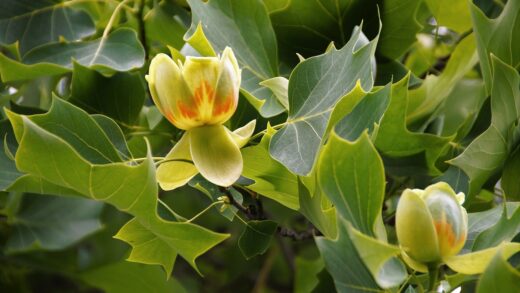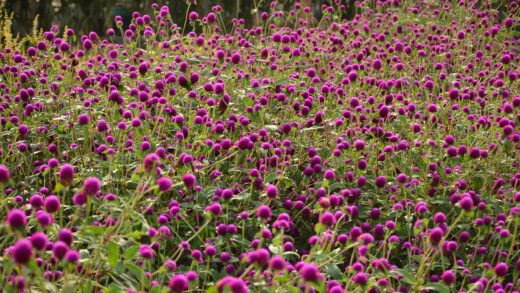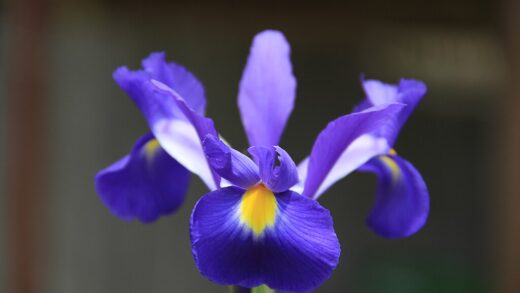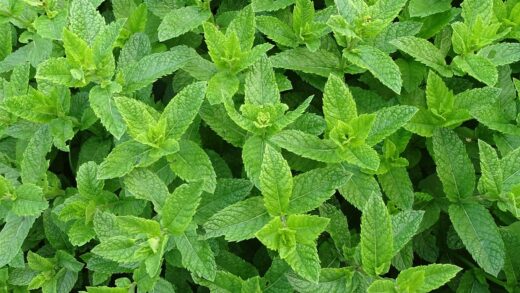While the plush plant does not require frequent or aggressive pruning in the same way that many traditional shrubs or houseplants do, periodic trimming and grooming play a vital role in maintaining its health, shape, and aesthetic appeal. Pruning is a strategic intervention that can be used to remove dead or damaged foliage, encourage a more compact growth habit, and propagate new plants from the cuttings. Understanding the proper techniques and the right time to perform these tasks will help you to keep your succulent looking its best and can even rejuvenate an older, leggy specimen, transforming it into a collection of new, vibrant rosettes.
The most common and routine form of pruning for the plush plant involves the removal of dead or dying lower leaves. As the plant grows and produces new leaves from its central rosette, the older, lower leaves will naturally senesce, turning yellow or brown, and eventually drying up. While these leaves will eventually fall off on their own, removing them proactively is beneficial. This simple act of grooming not only tidies up the plant’s appearance but also improves air circulation around the base of the stem, which can help to prevent the development of fungal issues and discourage pests from taking shelter in the decaying material.
To remove these dried leaves, you can typically just give them a gentle tug, and they will detach cleanly from the stem. For leaves that are not yet completely dry, a slight side-to-side twisting motion is usually effective. It is important to ensure the leaf is removed completely at the point where it meets the stem, as leaving small stubs behind can create potential entry points for rot or disease. This is a simple maintenance task that can be performed at any time of the year whenever you notice dead leaves accumulating at the base of your plant.
Another important reason for pruning is to remove any spent flower stalks after the plant has finished blooming. The plush plant produces beautiful, bright orange and red flowers on a long stalk that emerges from the side of the rosette. Once these flowers have faded and died, the entire stalk will begin to dry out. Trimming this stalk off at its base with a clean pair of scissors or pruning shears will divert the plant’s energy back towards vegetative growth, rather than allowing it to be wasted on the dying inflorescence. This also keeps the plant looking neat and tidy.
Beyond basic grooming, more significant pruning, often referred to as “beheading,” is used to correct a plant that has become etiolated or “leggy.” This happens when the plant, often due to insufficient light, develops a long, bare stem with a rosette of leaves only at the very top. While this is a natural growth habit for many Echeveria species over time, beheading can be used to restore a more compact and appealing form. This process involves cutting off the top rosette and re-rooting it, effectively creating a new, shorter plant and often stimulating new growth on the old stem.
More articles on this topic
The process of beheading
Beheading a plush plant is a straightforward but impactful pruning technique used to rejuvenate a leggy specimen. The first step is to select the right tool for the job; a clean, sharp knife, razor blade, or a pair of bypass pruners will ensure a clean cut, which is crucial for preventing infection and promoting healthy callusing. It is important to sterilize your cutting tool with rubbing alcohol before you begin to avoid introducing any pathogens into the fresh wounds of the plant.
Once your tool is ready, carefully decide where to make the cut. You will want to cut the stem below the rosette, leaving about one to two inches of stem attached to the head. This short stem will act as an anchor when you replant the cutting. Visually inspect the stem and choose a spot that allows for a clean, straight cut. Hold the rosette firmly but gently with one hand and make a swift, decisive cut through the stem with your other hand. You will now have two separate parts: the top rosette cutting and the original rooted base.
The next, and most critical, step for the rosette cutting is to allow the cut end to dry and form a callus. This protective layer seals the wound and prevents the cutting from absorbing too much moisture and rotting when it is planted. Place the cutting in a dry, well-ventilated area away from direct sunlight for several days to a week. You will know it is ready when the cut surface is completely dry to the touch and has a slightly hardened, shrunken appearance. Do not skip this step, as it is essential for successful rooting.
While the top cutting is callusing, you should also care for the original base that is still in the pot. Continue to provide it with bright, indirect light and water it very sparingly. In many cases, the leafless stem will begin to sprout multiple new, small rosettes, or “pups,” from the dormant nodes along its length. This is a fantastic bonus of the beheading process, as it not only gives you a new, compact plant from the top cutting but also a cluster of new baby plants from the original base, effectively multiplying your collection.
More articles on this topic
Replanting the pruned rosette
After the cut end of the plush plant’s rosette has formed a proper callus, it is ready for the final step of the beheading process: replanting. Prepare a small pot with a drainage hole, filled with a fresh, well-draining cactus or succulent soil mix. The pot should be just large enough to comfortably accommodate the new cutting. Using a gritty, porous soil is just as important for a cutting as it is for a mature plant, as it will provide the aeration and drainage necessary for new roots to develop without rotting.
Creating a small indentation in the center of the soil with your finger or a pencil can make planting the cutting easier. Gently place the calloused stem of the rosette into the indentation, burying it just deep enough so that the cutting can stand upright on its own. The lower leaves of the rosette should be sitting just above the soil level, not touching it. Gently firm the soil around the base of the stem to provide some stability, but be careful not to pack it down too tightly, which would impede drainage.
Once the cutting is planted, the initial watering is a matter of patience. It is crucial not to water the cutting immediately. Wait for about a week before providing any moisture. This gives the plant more time to settle and further reduces the risk of rot before any new roots have had a chance to form. After the first week, you can begin to water very lightly, just enough to moisten the soil and encourage root growth. A spray bottle can be useful for this initial stage, allowing you to dampen the soil without saturating it.
Over the next several weeks, the cutting will begin to grow new roots from the base of the stem. You can check for rooting by giving the plant a very gentle tug; if you feel resistance, it is a sign that roots are forming. During this time, keep the plant in a location with bright, indirect light, avoiding harsh, direct sun. Once the plant is well-rooted and you observe new growth from the center of the rosette, you can gradually begin to care for it as you would a mature plush plant, transitioning to a more thorough “soak and dry” watering schedule.
Pruning for propagation
Every act of pruning your plush plant presents an excellent opportunity for propagation, allowing you to easily create new plants to expand your collection or share with others. When you behead a leggy plant, the top rosette becomes a new plant, and the remaining stem often produces multiple new offsets. This is a highly efficient method of vegetative propagation that takes advantage of a routine maintenance task. Instead of discarding the pruned parts, you can view them as the starting point for new life.
Even the healthy leaves that you may need to remove from the lower part of the stem to create a long enough “handle” for replanting a beheaded rosette can be used for leaf propagation. As long as these leaves are removed cleanly from the stem, with the base intact, each one has the potential to grow into a brand new plant. Simply allow the base of the leaves to callus over for a few days, then lay them on top of a tray of succulent soil. With patience and light misting, they will eventually sprout tiny roots and a new baby rosette.
Sometimes, a plush plant may grow in a sprawling or multi-branched manner rather than as a single rosette. In these cases, you can prune off some of the side branches to encourage a tidier shape or to thin out a crowded plant. Each of these pruned branches can be treated as a stem cutting. Just as with a beheaded rosette, you will need to remove the lower leaves from the cutting to expose a couple of inches of bare stem, allow the cut end to callus, and then plant it in a well-draining soil mix to root.
By embracing pruning as a method of propagation, you can transform a single overgrown or leggy plush plant into a multitude of perfectly formed new specimens. This sustainable approach to gardening ensures that no part of the plant goes to waste and allows you to easily multiply your favorite succulents. It is a rewarding process that highlights the remarkable resilience and regenerative capabilities of these fascinating plants, turning a simple act of maintenance into an exciting opportunity for creation.
The best time for pruning
The timing of your pruning activities can have a significant impact on the success rate of rooting cuttings and the overall recovery of the plant. The best time to undertake any major pruning, such as beheading a leggy plush plant, is during its active growing season in the spring or early summer. During this period, the plant is at its peak vigor, with high energy reserves and a strong drive to grow. This means that both the cut rosette and the remaining stem will heal more quickly and will be more likely to produce new roots and new growth in a timely manner.
Pruning during the plant’s active season provides the cuttings with the optimal environmental conditions for rooting. The warmer temperatures and longer daylight hours of spring and summer stimulate faster root development. A cutting taken during this time will typically establish itself much more quickly than one taken during the plant’s dormant period. This reduces the amount of time the unrooted cutting is vulnerable to rot or dehydration, thereby increasing the overall chances of successful propagation.
Conversely, it is generally advisable to avoid major pruning during the autumn and winter months when the plush plant is dormant. In its resting state, the plant’s metabolic processes are slowed down, and it does not have the energy or the hormonal drive to produce new roots or leaves efficiently. A cutting taken in the winter will take much longer to root, if it roots at all, and it will be much more susceptible to rotting in the cool, damp conditions. Similarly, the pruned parent plant will be slow to heal and may not produce new offsets until the spring.
Minor grooming, such as the removal of dead, dried leaves or spent flower stalks, can be done at any time of the year as needed. These minor trims do not place significant stress on the plant and are simply part of its regular upkeep. However, for any pruning that involves cutting into healthy, living tissue, such as beheading or taking cuttings, timing your actions to coincide with the plant’s natural growth cycle in the spring and summer will yield the best and most reliable results.


















